Sharp Travel & Tours Inc.
Contact Info
Telephone - 847.759.8813
Toll Free - 1.888.To.Sharp
Email - sharptour@hotmail.com
Popular Destinations
STANDARD GROUP TOURS
DAILY EXCURSIONS
AMT RECOMMENDATIONS

Haeundae Beach is probably the most famous beach in the country. The name "Haeundae" was named by scholar Choi Chi-Won (857~?) of the Silla Dynasty (BC57~AD 935). When he was walking past Dongbaekdo Island, he was fascinated by it and left carved words "Hae Un Dae" on a Stone Wall on Dongbaekdo Island. Haeundae is 1.5km long, 30~50m wide, with an area of 58,400㎡. The white sand is rough and easily sticks to your skin. The sand of this beach is composed of sands that come from Chuncheon Stream and shells that have disintegrated naturally by the wind over a long time. Haeundae Beach is also famous for the various cultural events and festivals held throughout the year. At Haeundae Beach there is a Folk Square where you can enjoy traditional games such as Neoldduigi (seesaw jumping), Korean wrestling, Tuho(arrow throwing), tug-of-War and yutnori. There is also the Beach Culture Center and the Beach Library. Numerous people visit every year from June to August.
Yongdusan park, which harmonizes Busan Tower and 70 different species of trees, is considered a favorite resting place among the citizens of Busan. It is called Yongdusan because the shape of the mountain looks like the head of a dragon that climbs to land from sea. Yongdusan park is an area of about 69,000 ㎡. There are coffee shops here and also the Busan Aquarium. The highlight of Yongdusan Park is a night view of Busan at the 120m-height Busan Tower. And there are the statue of General Lee Sunsin who was a great commander in Joseon Dynasty period(1392-1910) and 4.19 Revolution monument, the student's anti-government revolt.
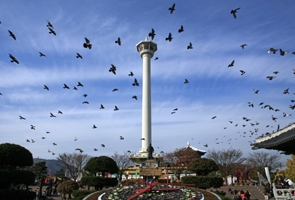
|
ANNUAL FESTIVALS
|
HAEUNDAE BEACH
YONDUSAN PARK

BUSAN ATTRACTIONS
Beomeosa Temple is located at the edge of a famous mountain in Busan, Mt.Geumjeongsan. About 1,300 years ago it was constructed by monk Ui Sang in the 18th year (678) of King Munmu (reign 661~681) of the Silla Kingdom (the kingdom mainly occupied the Gyeongsang-do Province region in 678A.D.). In the geography book 'Donggukyeojiseungram' the origin of Beomeosa Temple is written as follows: "There is a well on the top of Mt. Geumjeongsan and the water of that well is gold. The golden fish in the well rode the colorful clouds and came down from the sky. This is why the mountain is named Geumsaem (gold well) and the temple is named 'fish from heaven'."
BEOMEOSA TEMPLE
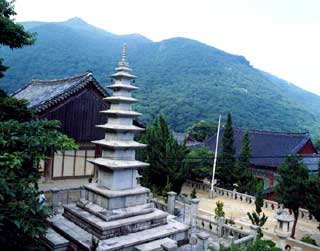
The Busan Aquarium contains over 35,000 kinds of fish, algae, reptiles, and amphibians. This state-of-the-art facility is one of Korea’s top aquariums. The Busan Aquarium covers an area of 36,000 m2 and has 3 underground levels as well as outdoor park area. In the first underground level you can find a simulator, souvenir shop, and several places to eat, while in underground levels 2 and 3 you can find various kinds of aquariums. The third underground level boasts an 80m main tank (seabed) tunnel.
BUSAN AQUARIUM
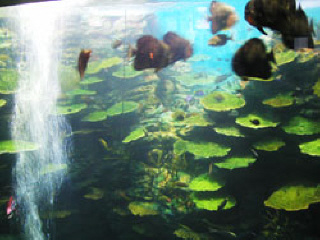
The Jagalchi Market is Korea's largest seafood market. After the Korean War the market solidified itself as a fish market. Most of the people who sell fish are women, so the women who sell here are called 'Jagalchi Ajumma', 'ajumma' meaning middle-aged or married women. This market represents Busan and is famous throughout the country. If you visit you can eat fresh raw fish right at the market. Even these days you can see women selling mackerel, sea squirts (ascidians) and whale meat on wooden board boxes along the road.
JAGALCHI MARKET
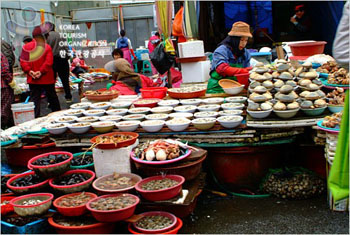
Designated as a Busan monument, along with Oryukdo Island, Taejongdae represents Busan, and is especially famous for its rock beach. Featuring its highest peak at 250 meters, there are forests of pine trees and other 200 varieties of trees. Taejongdae was named after the 29th king of Silla Dynasty BC57~AD 935), King TaeJong Mu-Yeol (604~661). King Tae-jong had traveled to many places but this was the place he enjoyed shooting arrows. Under the lighthouse of this resort is a rock called Sinseon Rock, named after the myth that gods and goddesses came down here to relax.
TAEJONGDAE PARK
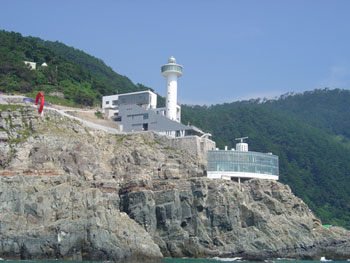

Every year in October the Jagalchi Cultural Tourism Festival is held, and it is easy to visit because of the convenient transportation of the subway. The Jagalchi Market is where you can see the lifestyle of the indigenous Busan natives.
The original Beomeosa Temple building was lost during Imjinwaeran Invasion (Japanese Invasion of Korea in 1592) but was renovated in 1713, which remains as it now is. Daeungjeon is one of the most delicate and luxurious architectures of the Joseon Dynasty (1392~1910). There is Iljumun, the three-story pagoda with four pillars, built in the 9th century, and seven royal palace wings, pavilions, three gates, and eleven hermitages. Designated as a natural monument, the wisteria woods and valleys are most beautiful in May.
One feels like they are walking along the ocean floor as they pass through this tunnel with various species of fish and sharks swimming above head. This is one of the most popular areas of the aquarium and guarantees to be a special experience. The simulator will stretch your imagination and give you the tingling feeling of experiencing life on the ocean floor.
At this rock is a figure called Mangbuseok, named after the story of a woman who waited for her husband who had been taken to Japan. Taejongdae is also famous for the ritual of praying for rain, performed when there are droughts, and rain on the 10th of lunar May is called the 'Taejong Rain'. On days with clear skies you can see Japan’s Daema Island from the observatory.
POPULAR DESTINATIONS
© 2008 Sharp Travel and Tours Inc.
